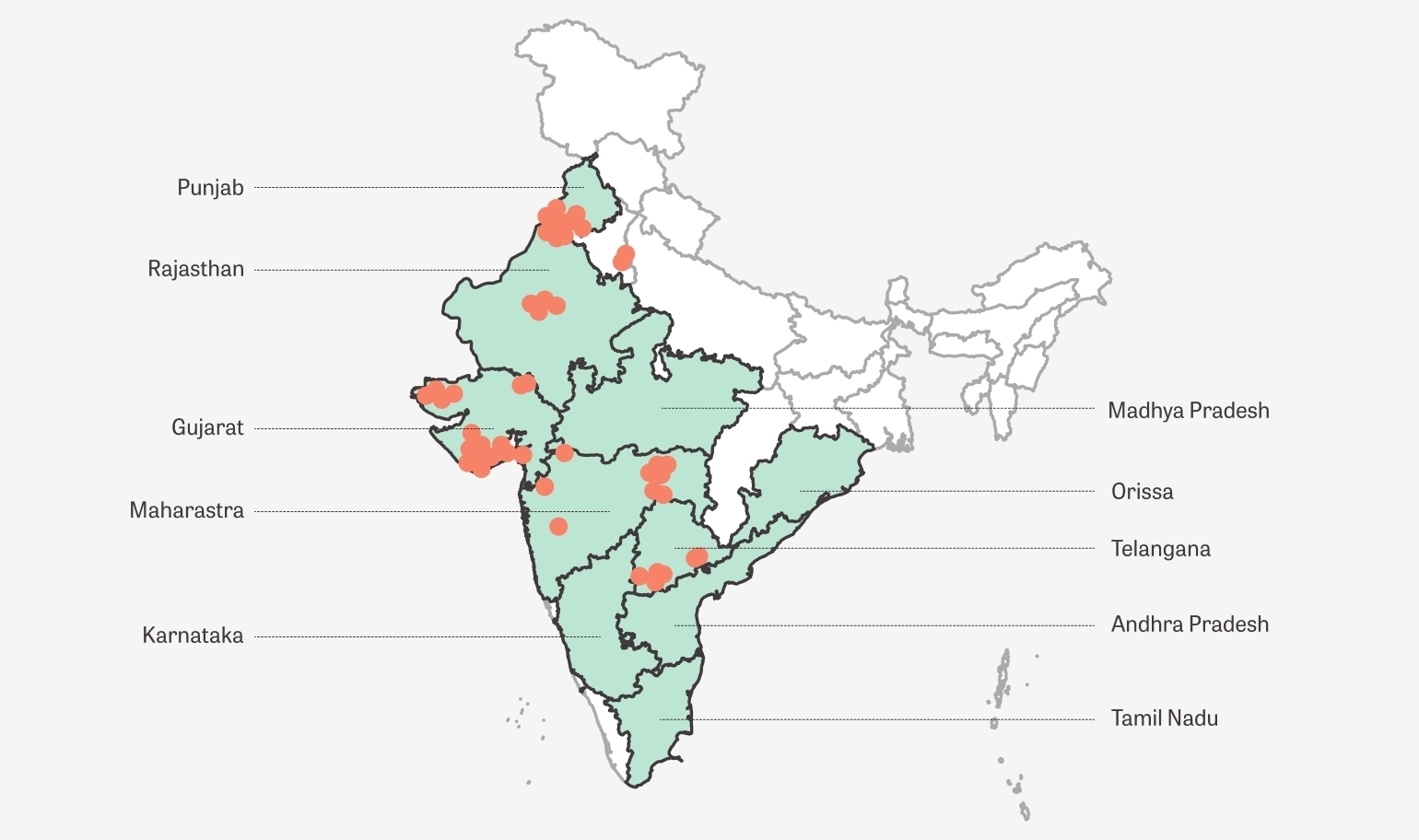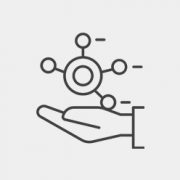The CottonAce solution guides smallholder cotton farmers on the optimal time to take preventive action and protect their farm against avoidable crop losses due to pests such as the Pink and American bollworm.
App is deployed in 10 states
Target: 10,000 farmers

CottonAce app has been deployed in 10 states as of Kharif 2021 season. The above heat map displays red alerts – or high bollworm infestation levels – reported between 1st July to 24 August 2021.
In Kharif 2021 (June to December) season, a detailed impact assessment has been planned across 65 districts in India with our scaling partners. It will include a sample from the roughly 10,000 Lead farmers who are part of this season’s deployment, our largest to date.
Primary users of the CottonAce app – lead farmers – are selected for the lead role they play in guiding fellow (cascade) farmers in their respective communities. There are between 50,000-100,000 lead farmers growing cotton in India, who are trained by farmer welfare programs to manage local pest infestations, including with the help of CottonAce. On average, a single lead farmer will disseminate the app advisory to 10 cascade farmers, thereby extending the overall reach of the solution.
In Summer 2020, the first impact assessment by Agriculture university, Dharwad confirmed a statistically significant increase in income among farmers who adopted the app advisory.
An independent Impact Assessment was conducted during Kharif 2020 which analysed yield, pesticide cost, selling price and net gain reported by CottonAce adopters. Farmers were surveyed across 4 districts across Maharashtra, Gujarat and Telangana, mobilised by Better Cotton Initiative (BCI) members Welspun Foundation and Deshpande Foundation. The assessment observed an increase in net profit of the farmers and a better yield quality.
We aim to reach the majority of Lead Farmers by Kharif 2022 (next year’s growing season), and scale our solution by roughly 5x to 10x. This deployment will be planned based on the results from our Kharif 2021 impact assessment and will move us closer to our goal of impacting over 500,000 cotton farmers in India by the end of Kharif 2023. In parallel, we are exploring alternative approaches to scale this solution beyond 2023.

Google AI Impact Challenge 2019 Winner

AI4AI Award 2020: World Economic Forum and State Government of Telangana

World Changing Ideas 2021
Honorable Mention – Developing World Technology

NASSCOM AI Gamechangers 2021 –
AI for Public Sector

© 2025 Wadhwani AI
ROLES AND RESPONSIBILITIES
An ML Engineer at Wadhwani AI will be responsible for building robust machine learning solutions to problems of societal importance; usually under the guidance of senior ML scientists, and in collaboration with dedicated software engineers. To our partners, a Wadhwani AI solution is generally a decision making tool that requires some piece of data to engage. It will be your responsibility to ensure that the information provided using that piece of data is sound. This not only requires robust learned models, but pipelines over which those models can be built, tweaked, tested, and monitored. The following subsections provide details from the perspective of solution design:
Early stage of proof of concept (PoC)
Late PoC
This is early to mid-stage of AI product development
Post PoC
Responsibilities during production deployment
We realize this list is broad and extensive. While the ideal candidate has some exposure to each of these topics, we also envision great candidates being experts at some subset. If either of those cases happens to be you, please apply.
DESIRED QUALIFICATIONS
Master’s degree or above in a STEM field. Several years of experience getting their hands dirty applying their craft.
Programming

ROLES AND RESPONSIBILITIES
As an ML Scientist at Wadhwani AI, you will be responsible for building robust machine learning solutions to problems of societal importance, usually under the guidance of senior ML scientists. You will participate in translating a problem in the social sector to a well-defined AI problem, in the development and execution of algorithms and solutions to the problem, in the successful and scaled deployment of the AI solution, and in defining appropriate metrics to evaluate the effectiveness of the deployed solution.
In order to apply machine learning for social good, you will need to understand user challenges and their context, curate and transform data, train and validate models, run simulations, and broadly derive insights from data. In doing so, you will work in cross-functional teams spanning ML modeling, engineering, product, and domain experts. You will also interface with social sector organizations as appropriate.
REQUIREMENTS
Associate ML scientists will have a strong academic background in a quantitative field (see below) at the Bachelor’s or Master’s level, with project experience in applied machine learning. They will possess demonstrable skills in coding, data mining and analysis, and building and implementing ML or statistical models. Where needed, they will have to learn and adapt to the requirements imposed by real-life, scaled deployments.
Candidates should have excellent communication skills and a willingness to adapt to the challenges of doing applied work for social good.
DESIRED QUALIFICATIONS
